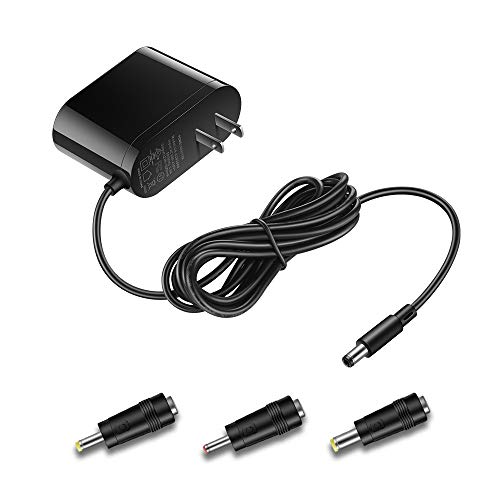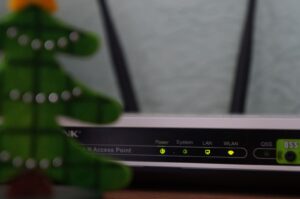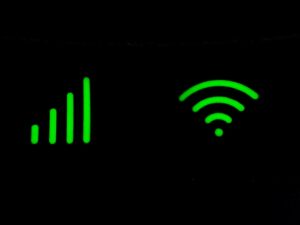Since the 19th century, information has been transmitted through the air thanks to wireless technology. We have Bluetooth and WiFi, to mention a few. This form of communication plays a crucial role in how today’s world works.
However, just how many types of wireless technology are there? And is wireless technology limited to WiFi and Bluetooth alone? Keep reading as we uncover the different types of wireless technology and what they entail.
What Is Wireless Technology?

Wireless technology is a crucial aspect of wireless communication devices. This technology permits the transfer of information between two points without needing optical fibers or an electrical conductor. Instead, this technology uses electromagnetic waves like radio waves or infrared waves.
- Compatible with major cable internet providers including Xfinity, Spectrum, Cox and more. NOT compatible...
- [Compatibility] 12V Power Supply Adapter Compatible with Netgear, Linksys, Asus,Motorola, Motorola/Arris...
The advent of wireless technology coincided with the discovery of electromagnetic waves in the 19th century. Its first commercial use was to make a radio, which happened in 1890 by Macaroni. Today, the technology encompasses much more, from baby monitors to cell phones.
The Different Types of Wireless Technology
Wireless technology encompasses a broad spectrum of things. For instance, they’re the radio communication, satellite, Bluetooth, and more. There is much more to note about these different types of wireless technology and what they entail. Let’s get started.
WiFi
WiFi is the mainstream use of wireless technology. It is common among those who use smart devices and play a role in security and control systems. WiFi is a wireless technology that helps connect smart devices to the internet. WiFi is a radio signal sent from a router to nearby devices, which converts the signal to usable data.
WiFi is quite common because of its portability; you don’t need wires to establish a connection. Moreover, passwords often protect the connection to prevent security issues. WiFi can be hacked or shared if it is unprotected and someone with ill intent is nearby.
Satellite Communication
Satellite communication spreads far and wide and helps almost every being stay connected regardless of where they are in the world. Here is how satellite communication works. First, the satellite receives a signal from the transmitter on the ground; it amplifies the signal via its transponder and sends it back to the antenna (receiver) on Earth.
For satellite communication to work, there is a need for two parts: the ground and space segments. The ground segment encompasses fixed/mobile transmission, ancillary equipment, and reception. On the other hand, the space segment is the satellite itself. Satellite communication uses radio waves to work; no wires are involved. Plus, this communication reach is broad!
Broadcast Radio
Broadcast radio was the first wireless technological communication to exist. It was first used sometime in the 1890s and is still prevalent today. Specialized communication works by broadcasting sounds through radio waves picked up by receivers and converted to sounds.
The mainstream type of radio broadcasting is FM stations, thanks to the better sound fidelity. This form of broadcasting is relatively recent, appearing in 1930. But while FM stations offer excellent sound fidelity, they have a much shorter range than their alternatives, like AM. Hence, the station is only for local use.
Infra-red Communication
Infrared communication is the transmission of information through infrared waves. When regarding wireless technology uses, this mention needs to be included. Yet, it is prevalent in our daily lives. Infrared radiation is a few wavelengths higher than the visible red color on the electromagnetic spectrum.
Infrared radiation acts within a short range. It is used for TV remote control, communication, and security control. For infrared communication to work, there is a need for a photo LED transmitter and a photodiode receptor. The information between the control and receptors is transferred in this way. The widespread uses of infrared technological communication are TVs, phones, computers, and security systems.
Bluetooth Communication
You know of Bluetooth connection. It connects your mobile device to speakers, headphones, mice, and home appliances. Bluetooth is versatile and, over the years, has seen longer ranges. Plus, you can use Bluetooth to exchange information, like WiFi.
With Bluetooth wireless technology, you have to pair. More so, technological communication allows only one pairing at a time. There are also various Bluetooth versions with different capacities. Along with WiFi, this form of wireless technology is one of the most popular uses of wireless technology known to the commoner.
Microwave Communication
Microwave wireless technology works with radio waves. With microwave communication, you can transfer information via two main methods. First, with terrestrial communication, and second, through satellite communication. The satellite method is more exciting.
The satellite orbiting the EarthEarth sends a signal, and the stations on EarthEarth receive it. The frequency of the signals is usually between 11-14 gigahertz.
Also, the transaction speed is between 1Mbps to 10Mbps. While microwave communication is quite proficient, a significant setback is bad weather, which often affects the signals, especially if it’s raining.
The Pros and Cons of Wireless Technology
Wireless technology is a recent invention that has made life much easier for humans. Connections don’t need to be heavy because wires and connections have become seamless with simple commands.
While the innovation is remarkable, it is not all flowery; here are the pros and cons of wireless technology:
Pros:
- Information is transferred faster and at high speed
- Installation and maintenance cost way less than the alternative
- Unbridled access to the internet anywhere without wires
- It helps provide guided support for those working in remote areas
Cons:
- Unauthorized access to data by capturing signals in the air
- There is a need for a higher level of security to prevent hacking and other forms of it.
Key Takeaway
Nowadays, communication has gotten way easier as wireless technology replaces its predecessor. Undoubtedly, there is much more wireless technology than Bluetooth and WiFi.
There are infrared waves for TV control and broadcast radio. The spectrum is broad, and it keeps expanding. This technology uses electromagnetic waves and has applications in almost every field. The future has a lot of room to expand and grow.





